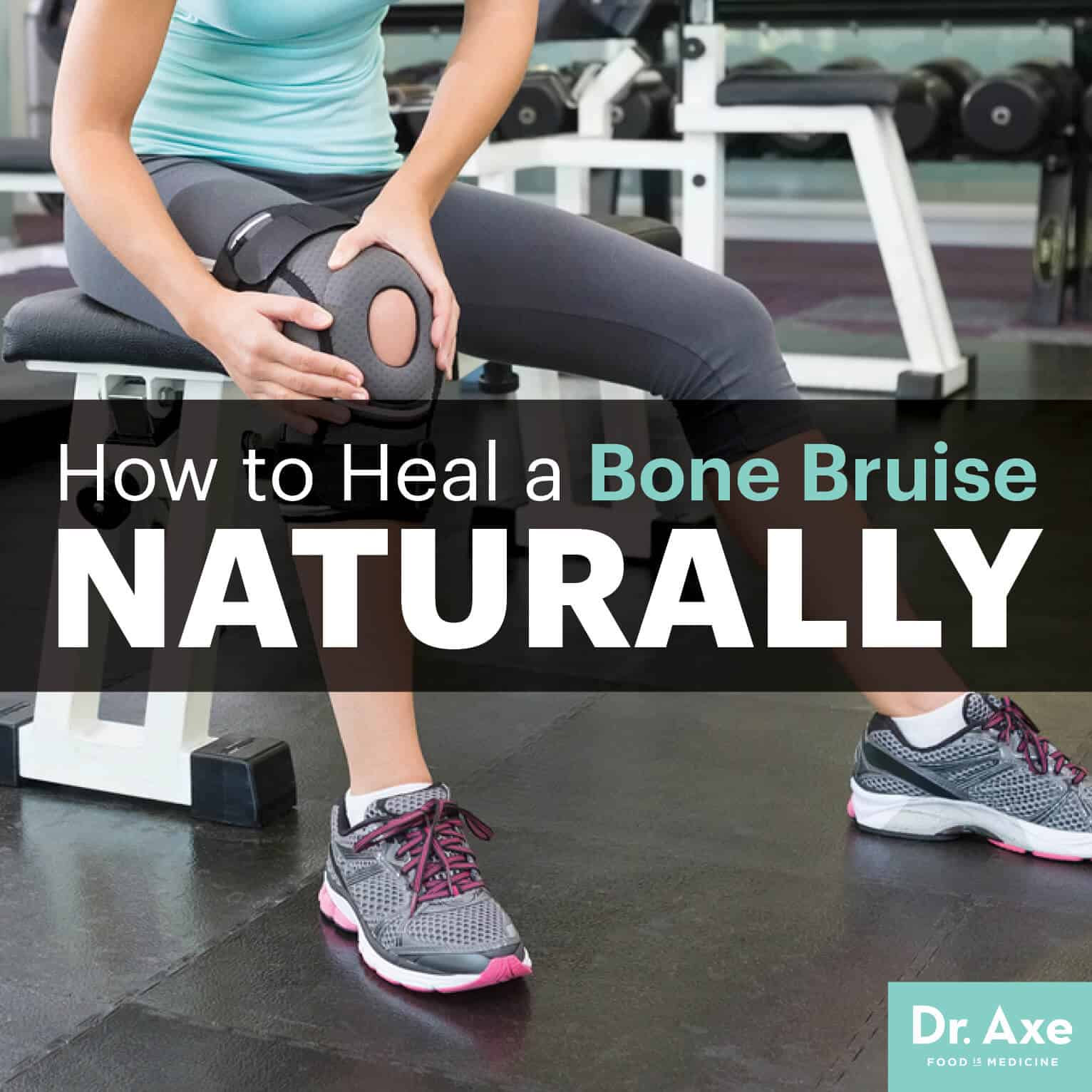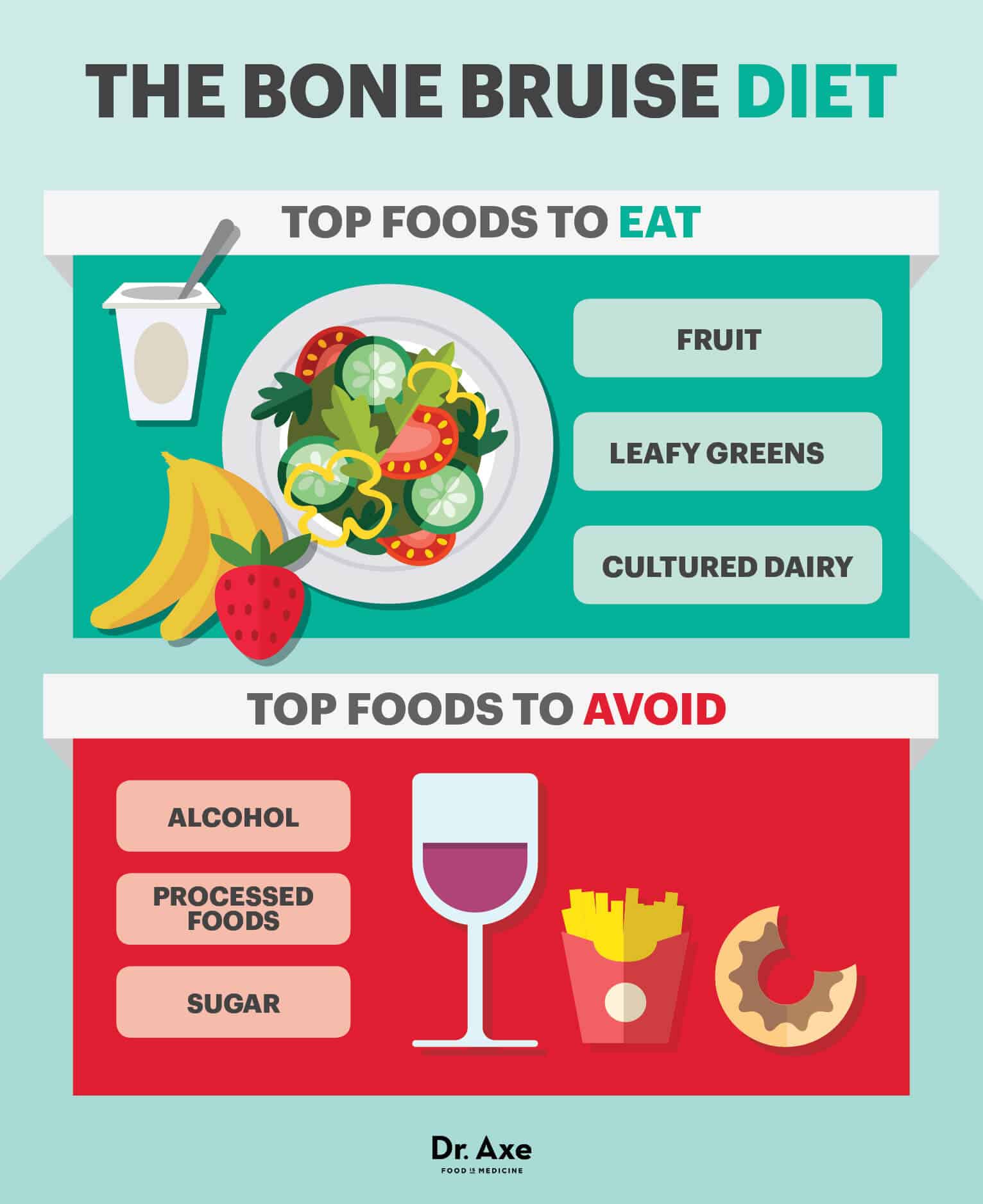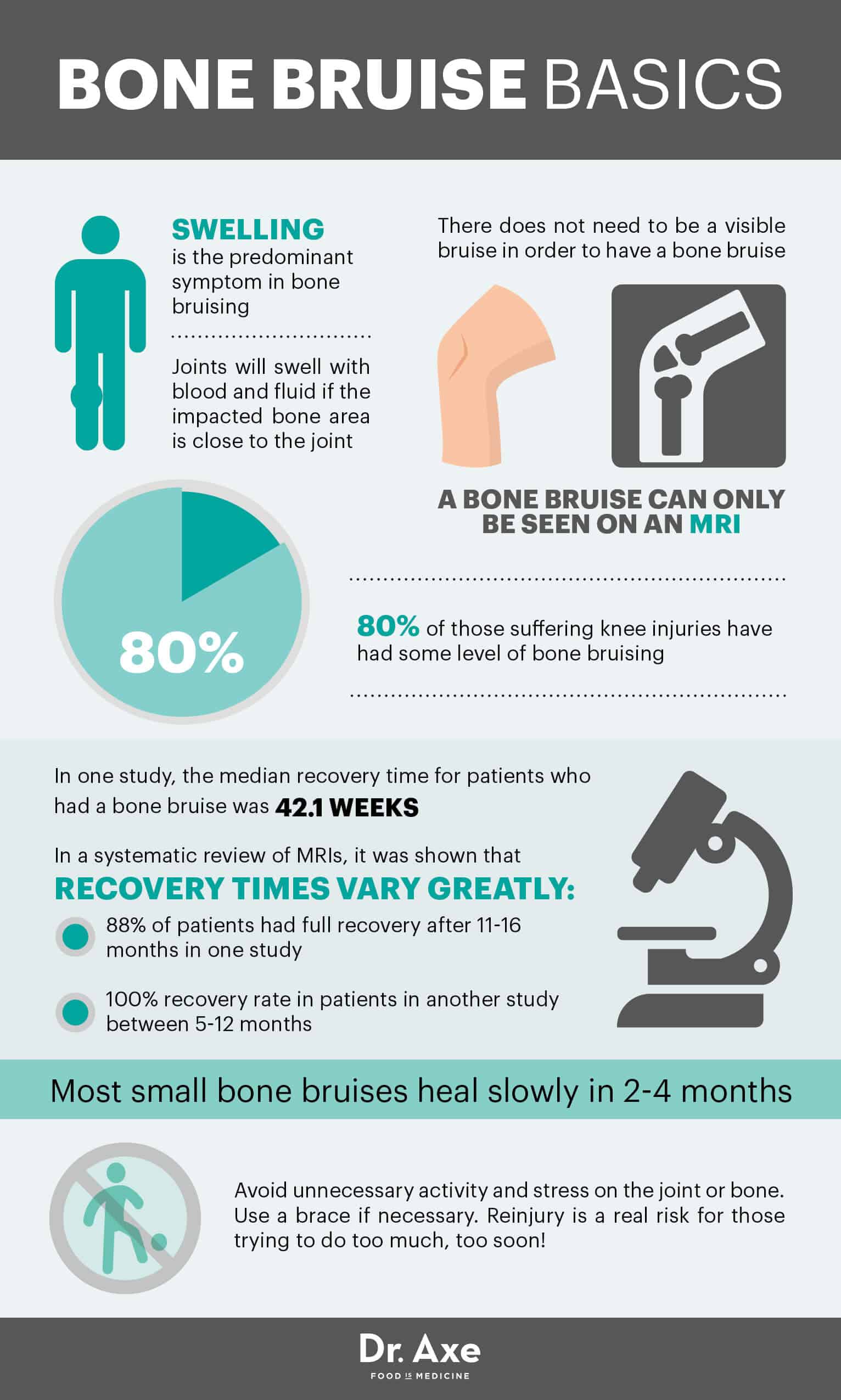This Dr. Axe content is medically reviewed or fact checked to ensure factually accurate information.
With strict editorial sourcing guidelines, we only link to academic research institutions, reputable media sites and, when research is available, medically peer-reviewed studies. Note that the numbers in parentheses (1, 2, etc.) are clickable links to these studies.
The information in our articles is NOT intended to replace a one-on-one relationship with a qualified health care professional and is not intended as medical advice.
This article is based on scientific evidence, written by experts and fact checked by our trained editorial staff. Note that the numbers in parentheses (1, 2, etc.) are clickable links to medically peer-reviewed studies.
Our team includes licensed nutritionists and dietitians, certified health education specialists, as well as certified strength and conditioning specialists, personal trainers and corrective exercise specialists. Our team aims to be not only thorough with its research, but also objective and unbiased.
The information in our articles is NOT intended to replace a one-on-one relationship with a qualified health care professional and is not intended as medical advice.
How to Heal a Bone Bruise Naturally
March 6, 2016

A bruise is a bruise is a bruise … unless it’s a bone bruise.
Typically, a bruise occurs when blood vessels are damaged below the surface of the skin and collect toward the surface as a visible black and blue mark. (1)
A bone bruise happens when some of the fibrous tissues inside the bone, called trabeculae, are damaged. In the case of a bone fracture, all of the trabeculae are damaged, thus causing a break. A bone bruise is a step before a break and can commonly lead to a fracture.
Bone bruises are painful, more so than their skin-derived cousins, and take longer to heal, usually lasting for months. They can result from many incidents, such as sports injuries, car crashes, impacts or twists from falling or other people, arthritis, and more. (2) They’re fairly common injuries. For instance, have you or anyone you know sprained an ankle? Most likely, I presume. Well, 50 percent of those who have sprained ankles have had some type of bone bruise occur. (3)
We all want to be able to heal bruises fast, but it’s important to know that bone bruises generally take time to heal (the length depending on where the bruise is located) — similar to how it takes a while to heal broken bones. However, there are several ways to help expedite that healing and lessen painful through easily obtainable, natural treatments.
Natural Treatments for Bone Bruises
Similar to sprained ankle remedies, bone bruises can be treated through diet, supplementation and rest. Here are some of the best natural remedies for a bone bruise.
1. Foods & Habits that Make Bone Bruises Worse
- Alcohol — Alcohol thins the blood, preventing proper flow and healing in the impact zone. Heavy drinking also has the potential to sap your bones of calcium and even degenerate your bones! (4)
- Processed Foods — The main reason processed foods are bad for bone bruises is the high sodium content, as well as the chemical preservatives and dyes. The unhealthy levels of sodium found in mass-produced snacks, fast foods and cured meats cause excessive secretion of bone-strengthening calcium through the kidneys. (5)
- Sugar — Processed, refined sugar promotes inflammation, which is the exact opposite of what you want to heal a bone bruise. Similar to alcohol, sugar also increases calcium excretion and even damages cartilage.
- Smoking — A habit that you certainly need to avoid for the sake of your bone health and health in general is smoking. Smoking constricts the blood vessels and increases the risk of clotting. It also reduces the rate of bone healing. (6)
2. Foods that Heal
- Leafy Greens — Leafy green vegetables are vitamin K-rich foods, and we know vitamin K is great for bone bruising because it helps regulate healthy blood clotting. Leafy greens also help reduce infection and promote bone density. Really, there is nothing leafy greens are bad for. (7)
- Fruit — Vitamin C is essential for healing bruises, and it’s a main component in many fruits and vegetables. It helps collagen form and heals damage to bones. Vitamin C also helps heal bruises and wounds. Vitamin C foods include citrus fruits, strawberries, papaya, guava and kiwi.
- Cultured Dairy — Dairy has a high level of calcium, which is a key building block for healthy bones. Cultured dairy like kefir, yogurt, buttermilk and certain cheeses are calcium-rich foods that are also easier to digest. As an added bonus, they’re also probiotic foods. That good bacteria promotes healing, fights infection and has antiviral effects. Also, the synergistic relationship between calcium and protein, both of which are in dairy, improve your ability to absorb calcium. (8)
3. Supplements
- Lysine — Lysine is a major bone and wound healer. This amino acid helps calcium absorption in the bones and regenerates tissue in the healing process. The body cannot make lysine so you can take it in supplement form or find it in foods high in lysine, including dairy, wild fish (especially cod and sardines), beans, brewer’s yeast, mung beans, parmesan cheese and eggs.
- Boron — One of the most overlooked boron uses is its ability to improve bone health. Boron is a trace mineral that works in conjunction with calcium to build bones and help treat and prevent osteoporosis and arthritis. It’s also been found to help fight against blood clotting when the body is trying to heal from sprains, bruises and fractures. (9)
- Bromelain — This enzyme, commonly found in pineapple and papaya, helps absorb protein in the body and reduces inflammation. However, to get the positive effects, a high level of it must be taken, which is why many people resort to taking it in supplement form. For bone-healing effects, take 500 to 2,000 milligrams of bromelain in two separate doses per day. (10)
There are several other remedies one can use to help treat and heal the symptoms of bone bruises. It’s fairly easy to recover from the contusion as long as you’re patient. Remember that time is the biggest remedy in a case like this. However, there are several things you can and should do while the clock ticks away.
For starters, you can try my Homemade Bruise Cream that uses the healing powers arnica, bilberry, comfrey and frankincense.
Arnica oil and other topical arnica products are an excellent choice for bruises of all types, including bone bruises. Arnica is a strong healer and helps bone bruises and the symptoms of bone bruising by reducing swelling and relieving pain.
The biggest factor in healing is rest. When you experience a bone bruise, you must always rest as much as you can and make sure not to put too much stress or pressure on the area. Rest is the most important thing in speed of recovery. While resting, make sure to properly elevate the bone that has been impacted above your heart to promote circulation and reduce swelling.
Icing and the use of poultices on the affected area are other great, easy ways to reduce the inflammation of a bone bruise. Some great choices for a poultice include comfrey, calendula and St. John’s wort. Comfrey is called “knit bone” for its ability to help fractures heal aid new cell growth, so it’s not surprising that it can help a bone bruise heal more quickly.

Types of Bone Bruises
Bone bruises were not diagnosed as such until recently, believe it or not. X-rays don’t show bone contusions, so it was not until MRIs came about that doctors started to see and discuss the term “bone bruise.”
There are three kinds of bone bruises depending on where it occurs on the actual bone. The first type, subperiosteal hematoma, is a bruise that occurs from an impact on that thin tissue on the top of the bone called the periosteum, causing blood to pool below it. It’s the most painful type of bone bruise.
The second kind is called interosseous bruising, where there’s a high compressive impact repeatedly forced on an area that causes damage to the bone marrow. This type of bone bruise is common in an athlete’s knees or elbows.
The third kind of bone bruise is known as a subchondral bruise, which occurs when the cartilage and the bone separate, causing bleeding within the cartilage.
Bone Bruise Risk Factors & Root Causes
Blood and fluid build up around the bone when certain areas are damaged by impact or wear. A bone bruise is one step below what happens when you have a bone fracture or stress fracture, which is the complete damage and release of the internal trabeculae in a certain bone.
Some of the main causes of bone bruises are sport-related activities. Repeated wear and tear on joints and bones, along with impacts typical in sports, can often lead to bone bruising.
Research has shown that bone bruises are associated with ACL tears, patella dislocations, occult fractures and contusions. For each injury, a unique pattern of bone bruising can be found on MR imaging, which results from the acute trauma. (11) In fact, a pattern with bone bruises in patients suffering ACL tears is acute and problematic. In one study, 80 percent of those who had an ACL tear experienced bone bruising. (12)
Since bone bruises are mostly impact-related injuries, it’s important to wear seat belts, which help reduce injury in car accidents, as well as proper sports protective gear like helmets and padding. Not wearing these protective items greatly increases your risk of bruises to the bone.
Arthritis and osteoarthritis are other risk factors for bone bruising. With these conditions, the cartilage breaks down, as does part of the bone, which leads the bones to grind against each other and be more easily bruised and damaged. (13)
Osteonecrosis is another potential risk factor when it comes to bone bruising. Osteonecrosis disrupts the blood flow to bones, weakening the integrity of the bone itself, thus leaving it more susceptible to bone marrow edema and bone bruises. (14)
Bone Bruise Symptoms & Recovery Timetable
The symptoms of bruised bones are similar to other injuries, like regular bruising, sprains, tears or fractures. Because it’s not a soft tissue bruise, the pain is more prominent and lasts longer with a bone bruise.
Bone bruise symptoms include:
- Pain and/or tenderness in the affected area (typically pain after a day or two is indicative of bone bruises)
- Swelling in the tissues around the impacted location
- Changing in color on the surface skin
- Joint pain near impact zone
- Swelling of the joints around the bone
- Extreme pain or pain that’s more severe than a typical bruise
Here are some more symptoms and facts on a bone bruise:
- Swelling is the predominant symptom in bone bruising.
- Joints swell with blood and fluid if the impacted bone area is close to the joint.
- There does not need to be a visible bruise in order to have a bone bruise.
- A bone bruise can only be seen on an MRI.
- Avoid unnecessary activity and stress on the joint or bone. Use a brace if necessary. Reinjury is a real risk for those trying to do too much, too soon.
- 80 percent of those suffering knee injuries have had some level of bone bruising.
- In one study, the median recovery time for patients who had a bone bruise was 42.1 weeks. (15) However, in a systematic review of MRIs, it was shown that recovery times vary greatly: 88 percent of patients had full recovery after 11–16 months in one study, while a 100 percent recovery rate in patients in another study was between five to 12 months. (16)
- Most small bone bruises heal slowly in two to four months.

Final Thoughts on Bone Bruises
Bone bruises are more serious than your typical bruise, and they take longer to heal. However, there are many natural ways to make the healing process speedier with proper diet, rest, supplements, and the use of therapeutic herbs and essential oils. So keep in the mind the following if you encounter a bone bruise:
- A bone bruise happens when some of the fibrous tissues inside the bone, called trabeculae, are damaged. In the case of a bone fracture, all of the trabeculae are damaged, thus causing a break. A bone bruise is a step before a break and can commonly lead to a fracture.
- If you’ve ever sprained your ankle, you may have had a bone bruise as well — 50 percent of those who have sprained ankles have had some type of bone bruise occur.
- The foods and lifestyle to avoid include alcohol, processed foods, sugar and smoking. The foods that can help heal a bone bruise include leafy green vegetables, fruit and cultured dairy.
- Other natural remedies for a bone bruise include the supplements lysine, boron and bromelain; frankincense, comfrey, bilberry and arnica oil; rest; icing; and poultices.
- There are three kinds of bone bruises, depending on where it occurs on the actual bone: subperiosteal hematoma, which occurs on the periosteum and is the most painful type; interosseous bruising, which damages the bone marrow and is common in the knee or elbow; and a subchondral bruise, which occurs when the cartilage and the bone separate, causing bleeding within the cartilage.
- Bone bruise symptoms include pain and/or tenderness in the affected area, swelling, discoloration, and joint pain near impact zone.
- The recovery time varies greatly from person to person, with most small bone bruises healing in two to four months, while more sever bone bruises can take up to a full year to heal completely. Of course, using the natural remedies explained here, you can help expedite healing time.


